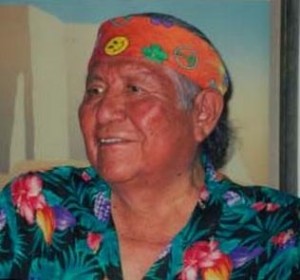Gorman grew up in a traditional Navajo hogan and began drawing at age 3. His grandmother helped raise him, recounting Navajo legends and enumerating his genealogy of artist ancestors. She kindled his desire to become an artist. While tending sheep in Canyon de Chelly with his aunts, he used to draw on the rocks, sand, and mud, and made sculptures with the clay, with his earliest subjects including Mickey Mouse and Shirley Temple.
He credited a teacher, Jenny Lind at Granado Presbyterian Mission School for his inspiration to become a full-time artist. After he left high school, he served in the Navy before entering college, where he majored in literature and minored in art at Northern Arizona University. In 1958, he received the first scholarship from the Navajo Tribal Council to study outside of the United States, and enrolled in the art program at Mexico City College. There he learned of and was influenced by the work Diego Rivers. He later studied art at San Francisco State College, where he also worked as a model.
Gorman moved from California to New Mexico opening the R. C. Gorman Navajo Gallery in Taos in 1968. It was the first Native American-owned art gallery in Taos. In 1973, he was the only living artist whose work was shown in the “Masterworks of the American Indian” show held at the Metropolitan Museum in New York, NY. One of his pieces was selected for the cover of the exhibit’s catalog.
He is referred to as “the Picasso of American Indian art” by the New York Times, his paintings are primarily of Native American women and characterized by fluid forms and vibrant colors, though he also worked in sculpture, ceramics, and stone lithography. He was also an avid lover of cuisine, authoring four cookbooks, (with accompanying drawings) called Nudes and Food.)
R.C. Gorman died at University Hospital in Albuquerque, New Mexico on November 3, 2005 after a fall in his home.

